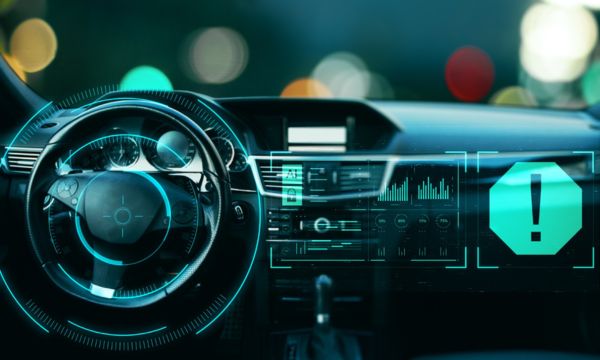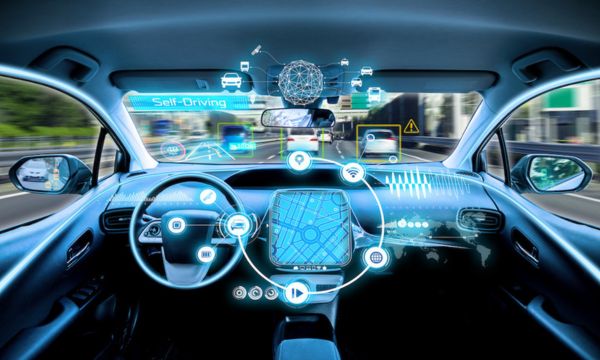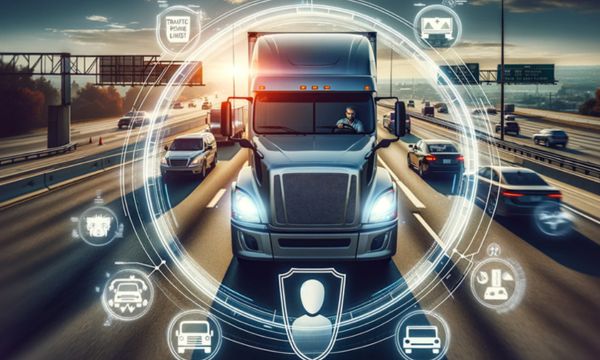Revolutionizing Driving: AI Integration in Cars
The automotive industry is undergoing a major transformation as artificial intelligence (AI) is applied to cars.
As technology continues to develop, artificial intelligence is fundamentally changing the way we drive, making it safer, more efficient, and more fun.
This article discusses the many ways artificial intelligence is changing driving, such as autonomous vehicles, advanced driver assistance systems (ADAS), and more.
1. Self-driving Cars:
The creation of self-driving cars is one of the most important steps in the integration of artificial intelligence.
Artificial intelligence algorithms and sensors help these vehicles find their way, understand their environment, and make choices in real time.
Technology companies like Tesla, Waymo, and Uber are at the forefront of this change.
Self-driving cars could completely change the way people travel. They say it will make driving safer, reduce traffic congestion, and improve gas mileage.
AI-powered self-driving cars can view vast amounts of information from sensors, cameras, and lidar systems to make quick choices, avoid accidents, and find the best route.
But getting many people to use self-driving cars will be difficult for several reasons, including legal issues, ethical concerns, and the need for strong cybersecurity to thwart hackers.
As artificial intelligence continues to develop, these issues must be addressed before self-driving cars can become a normal part of our lives.
2. Modern Driver Assistance Systems (ADAS):
It’s still early days for fully autonomous vehicles, but artificial intelligence is already making its mark on the automotive industry through advanced driver assistance systems (ADAS).
Some of the features these systems provide to make driving more enjoyable include adaptive cruise control, lane-keeping assistance, automatic emergency braking, and parking assistance.
ADAS uses sensors and cameras to collect data, which is then sent to artificial intelligence algorithms. These algorithms help vehicles see objects, people, and other vehicles on the road.
ADAS improves people’s driving skills, makes roads generally safer, and reduces the risk of accidents due to human error.
The use of artificial intelligence in ADAS is constantly changing as object recognition, predictive modeling, and machine learning technologies evolve.
For those not yet ready for a fully autonomous vehicle, these systems will make driving smoother, safer, and more comfortable as progress continues.
3. Automotive AI and Virtual Assistants Using Natural Language Processing (NLP)
Artificial intelligence can be used in cars in more than one way. In-vehicle virtual assistants, powered by natural language processing (NLP), are one example.
Voice-activated systems such as Apple’s Siri, Amazon’s Alexa, and Google Assistant can be found in modern cars, allowing drivers to control various tasks with their voice.
Virtual assistants built into cars can do things like change the temperature, play music, provide directions, and even answer general knowledge questions.
Using NLP algorithms, these systems can understand and respond to natural language. This makes the interaction easier to understand and use.
In addition, as AI algorithms improve, virtual assistants in cars learn to understand more complex commands and become more aware of their surroundings.
This not only makes driving more fun but also allows drivers to keep their hands and eyes on the steering wheel, allowing them to concentrate on the road.
4. Use of Predictive Maintenance:
The role of artificial intelligence in driving goes beyond controlling the vehicle; it also contributes to maintaining good performance.
Artificial intelligence algorithms are being used to support predictive maintenance, which is becoming an important part of ensuring modern vehicles are reliable and efficient.
AI can predict problems before they get worse by looking at data from sensors and diagnostic systems. This allows problems to be resolved before they occur.
This not only reduces the chance of sudden breakdowns but also reduces repair costs and downtime.
For instance, AI algorithms can look at data about how well an engine is running to guess when certain parts might need to be replaced.
This makes the scheduling of maintenance chores more efficient. This predictive method helps both individual vehicle owners and fleet operators, who can get the most out of their vehicles and make their operations run more smoothly overall.
5. Better Connectivity:
Putting AI into cars is related to the bigger ideas of smart cities and the Internet of Things (IoT). AI lets cars talk to each other, to traffic lights, and even to people walking on the street.
This creates a connected environment that makes things safer and more efficient.
Vehicles with AI can share real-time information about crashes, road conditions, and traffic jams. This lets drivers dynamically reroute their trips to avoid traffic.
Smart traffic lights and road signs are also connected and can change based on changing traffic trends, making traffic flow even better.
AI-powered connectivity also makes vehicle-to-everything (V2X) contact possible, which lets cars interact with their surroundings.
This includes talking to people on foot using their phones to let them know when cars are coming up behind them and the other way around.
These kinds of improvements help make the transportation system work better together, which makes roads safer and more efficient in the long run.
6. Problems and Things to Think About
Putting AI in cars has a lot of potential, but it also has some problems that need to be fixed before it can be widely used and accepted.
- Safety Concerns: Making sure that AI systems in cars are secure and reliable is the most important thing. To lower the risk of system failures or cyberattacks, it’s important to do thorough testing, validation, and constant monitoring.
- Ethical Problems: As AI systems get smarter, the moral issues that come up with decision-making algorithms and data privacy get trickier to solve. To gain the public’s trust, it’s important to find a balance between new technologies and moral standards.
- Regulatory Framework: The rules that govern cars must change to keep up with the addition of AI. To control the use of AI in the automotive business, it will be necessary to set up standard safety protocols, cybersecurity measures, and moral guidelines.
- Building up infrastructure: Putting AI into driving depends on having the right infrastructure, like strong communication networks, smart traffic systems, and safe ways to send data. Putting money into these areas is needed for AI-powered cars to work smoothly.

Revolutionizing-Driving-AI-Integration-in-Cars (Source – Google)
Conclusion:
A huge change is happening in the auto business with the addition of artificial intelligence to cars. AI is changing the way people drive by making it safer, more efficient, and easier to connect with others.
Examples include self-driving cars and improved driver assistance systems. As technology keeps getting better, it will be important to solve problems with safety, ethics, rules, and infrastructure before AI can fully be used in driving.
The future looks bright for transportation: AI-driven cars and smart cities will live together in peace, making driving safer, more efficient, and more fun for everyone.
FAQs
1. How does artificial intelligence (AI) change the way people drive?
By being used in many parts of the auto business, AI is a key part of changing the way people drive. This includes self-driving cars, advanced driver aid systems (ADAS), virtual assistants inside cars, predictive maintenance, better connectivity, and adding to the idea of smart cities.
2. What are the perks of self-driving cars and how do they work?
Self-driving cars use AI systems and sensors to find their way, understand their surroundings, and make decisions in real-time without any help from a person.
By looking at huge amounts of data to find the best routes and stop accidents, they give benefits like higher safety, less traffic, and better fuel efficiency.
3. Describe Advanced Driver-Assist Systems (ADAS) and explain how they make driving better.
The term “ADAS” refers to systems that use AI algorithms and devices to make driving safer and easier. Adaptive speed control, lane-keeping assist, automatic emergency braking, and parking assist are some of the features.
ADAS improves people’s driving skills, which makes the roads safer generally and cuts down on accidents caused by human error.
4. How do virtual helpers in cars that use natural language processing (NLP) improve the experience of driving?
NLP is used by virtual assistants in cars like Siri, Alexa, and Google Assistant to understand and follow natural language voice orders.
They do things like playing music, changing climate control, giving directions, and answering questions. This makes the driving experience more natural and easy to use.
5. What is predictive maintenance, and how does AI help make cars more reliable and efficient?
For predictive maintenance, AI algorithms look at data from sensors and diagnostic systems to guess what problems a car might have in the future.
This makes it possible to do preventative maintenance, which lowers the risk of breakdowns, increases car uptime, and lowers the cost of maintenance.
6. What role does connectivity driven by AI play in smart cities and the Internet of Things (IoT)?
Connectivity in cars that are driven by AI lets them talk to other cars, traffic infrastructure, and people walking on the street, making a connected ecosystem.
This helps smart cities and the Internet of Things (IoT) by sharing real-time information about road conditions, making traffic move better, and making it easier for vehicles to talk to everything else (V2X).
 Enhancing Safety: AI-Driven Collision Avoidance
Enhancing Safety: AI-Driven Collision Avoidance
As technology continues to change, artificial intelligence (AI) is becoming increasingly important in many areas. One very […]
More Understanding AI in Autonomous Vehicles
Understanding AI in Autonomous Vehicles
Self-driving cars, also known as self-driving cars, are a major technological advancement that relies heavily on artificial […]
More AI-Based Driver Monitoring Improves Road Safety and Performance
AI-Based Driver Monitoring Improves Road Safety and Performance
The automotive industry has undergone dramatic changes in recent years as artificial intelligence (AI) has been built […]
More